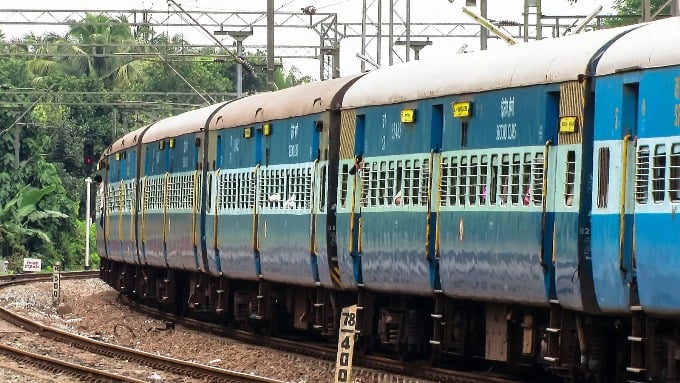The Indian Railways – the country’s largest organisation and biggest employer – will generate 1,000 MW through solar power on the rooftops of the myriad buildings it owns. Delivering his maiden speech as Railway Minister, Suresh Prabhu informed Parliament on Thursday that the railways were already building a solar power plant at Katra station in the Himalayan state of Jammu and Kashmir, and that work was scheduled to be completed by the end of March.
Long known for his advocacy in environmental matters, Prabhu – who now oversees the world’s third largest rail network – advocated a big increase in the use of trains to carry freight.
The minister said, “We need to invest in Indian Railways also because it is necessary for ecological sustainability. The annual consumption of fuel by the railways is just about 7% of the annual fuel consumption of the road sector. The energy consumption is about 75% to 90% less for freight traffic compared to road. The carbon dioxide emission is about 80% less than road. Investment in Indian Railways is an investment in our future.”
The railways are the largest consumer of electricity in India and a huge consumer of water. Prabhu ordered energy and water audits to improve efficiency and recycling.
Many Indian trains run on diesel, one of the most polluting fuels. Prabhu said commuter trains based on compressed natural gas (CNG) have been introduced in the northern parts of the country on a pilot basis. “We propose to convert 100 trains to duel fuel – CNG and diesel,” he added. “Locomotives running on LNG (liquefied natural gas) are currently under development.”
The minister’s speech evoked a positive reaction from environmentalists. Chandra Bhushan Singh, deputy director general of the New Delhi-based think tank Centre for Science and Environment, told thethirdpole.net, “We were not expecting announcements of 1,000 MW of solar. This is a very good thing. Everything in railways is electrical now. And solar has a huge potential to replace fossil fuels in the railway sector.”
Arunabha Ghosh, head of another New Delhi-based think tank, Council on Energy, Environment and Water, told thethirdpole.net, “We have also done calculations on this earlier looking at what would could be the potential of solar rooftops if installed at various stations, and we found that 1,800 MW could be installed. This was our calculation. So that way, to get started with 1,000 MW is very encouraging and a good initiative. Overall, the minister has a very clear direction towards a comprehensive environment management approach. In the budget, there is water conservation, waste to energy conversion, optimal land utilization, so it is very good.”

